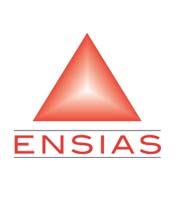- Accueil
-
L'Ecole
-
FORMATIONS
-
FORMATION INGENIEUR
-
Nouvelles filières offertes
- Ingénierie Intélligence Artificielle (2IA)
- Smart Supply Chain & Logistics (2SCL)
- Business Intelligence & Analytics (BI&A)
- Génie de la Data (GD)
- Génie Logiciel (GL)
- Ingénierie Digitale pour la Finance (IDF)
- Smart System Engineering (SSE)
- Data and Software Sciences (D2S)
- Cybersécurité, Cloud et Informatique Mobile (CSCC)
- REGLEMENT DES ETUDES DE L’ENSIAS CYCLE INGENIEUR
-
Nouvelles filières offertes
-
FORMATION INGENIEUR
- FORMATION CONTINUE
-
Recherche
- INTERNATIONAL
- ENTREPRISES
- VIE ESTUDIANTINE
- BIBLIOTHEQUE
LES DERNIÈRES INFORMATIONS
Acupuncture efficacy study using electromyographic signals
| Titre | Acupuncture efficacy study using electromyographic signals |
| Publication Type | Journal Article |
| Year of Publication | 2021 |
| Authors | Sabri, Y, Lamzabi, S, Siham, A, Maizate, A |
| Journal | International Journal of Circuits, Systems and Signal Processing |
| Volume | 15 |
| Pagination | 1571-1584 |
| Mots-clés | Acupuncture, Analog-to-digital, Arduino, Case-studies, Damaged region, Data acquisition, Digital transformation, Electromyographic signal, Electromyography, Electromyography signals, Full waves, Metadata, Needles, Signal processing, Signal-processing, Therapeutic techniques, Timing circuits |
| Abstract | Acupuncture is a centuries-old therapeutic technique. However, because of the large number of complicating circumstances, it has been difficult to clearly prove the treatment's therapeutic effectiveness. As a result, acupuncture has failed to acquire acceptance in the mainstream clinical sector. An electromyography (EMG) sensor was built and used to test the effcacy of acupuncture in alleviating muscular stiffness in this study. Electrodes, differential and inverting ampliffers, fflters, and a full-wave rectiffer made up the EMG circuit. The output of the circuit was sent to a microcontroller for analog-to-digital transformation in order to perform data acquisition. Acupuncture was used to treat four participants who had muscular dys function in various regions of their bodies in our case study. Before and after the therapy, EMG signals at the damaged regions were recorded. The ffndings revealed that the therapy had no immediate conceivable impact on the patients, since the levels of muscular contraction before and after the treatment were comparable. When the EMG signals were measured 30 minutes after the therapy, signs of muscular alleviation were found. This shows that acupuncture does supply patients with beneffcial medicine, although slowly. The act of placing the highly conducting needles into the acupuncture sites, we believe, is similar to connecting a parallel wire to a circuit, resulting in a short-circuited route at the meridian. It permits the meridian's polarized inner energy, or qi, to pass through. The equilibrium in qi regulation can therefore be restored by unclogging the ow of qi.The repair process is relatively slow, and the treatment impact may not be immediately apparent, because the constitutive qualities at the acupuncture points where the needles are pricked may not alter quickly. © 2021 by the authors. Licensee MDPI, Basel, Switzerland. |
| URL | https://www.scopus.com/inward/record.uri?eid=2-s2.0-85120937321&doi=10.46300%2f9106.2021.15.169&partnerID=40&md5=3e2167416a17d787084cf65ecb01bc02 |
| DOI | 10.46300/9106.2021.15.169 |
Revues:
LIENS UTILES
Localisation
Contactez-nous
ENSIAS
 Avenue Mohammed Ben Abdallah Regragui, Madinat Al Irfane, BP 713, Agdal Rabat, Maroc
Avenue Mohammed Ben Abdallah Regragui, Madinat Al Irfane, BP 713, Agdal Rabat, Maroc
![]() Télécopie : (+212) 5 37 68 60 78
Télécopie : (+212) 5 37 68 60 78
![]() Secrétariat de direction : 06 61 48 10 97
Secrétariat de direction : 06 61 48 10 97
Secrétariat général : 06 61 34 09 27
Service des affaires financières : 06 61 44 76 79
Service des affaires estudiantines : 06 62 77 10 17 / n.mhirich@um5s.net.ma
CEDOC ST2I : 06 66 39 75 16
Résidences : 06 61 82 89 77
Education - This is a contributing Drupal Theme
Design by WeebPal.
Design by WeebPal.



































